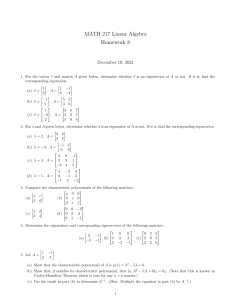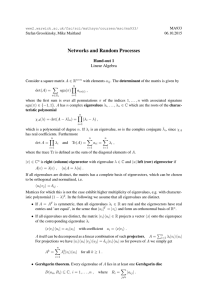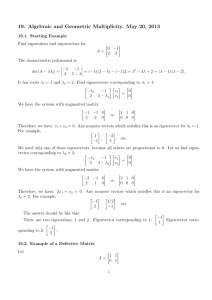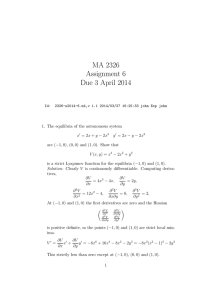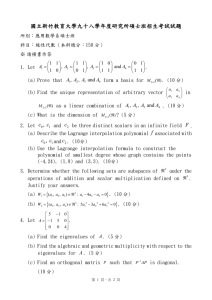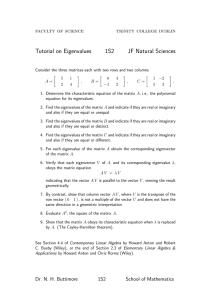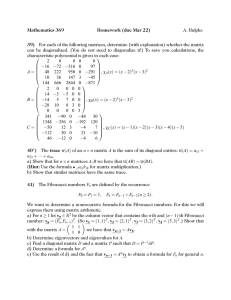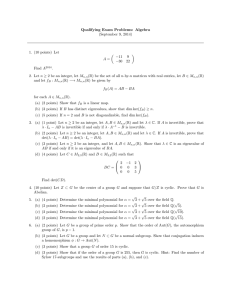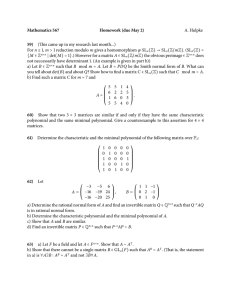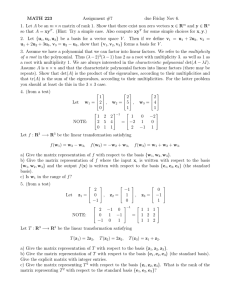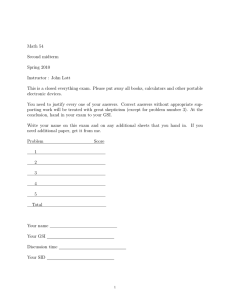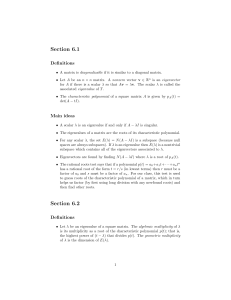Worksheet 17: Characteristic polynomial and a glimpse of diagonalization
advertisement
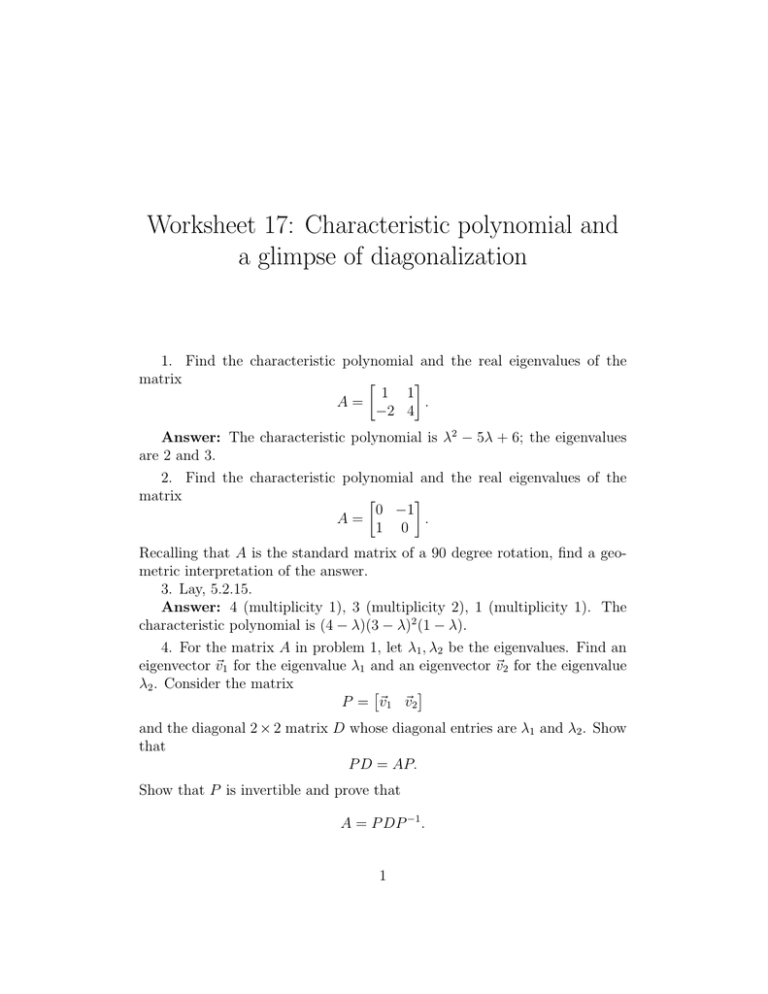
Worksheet 17: Characteristic polynomial and a glimpse of diagonalization 1. Find the characteristic polynomial and the real eigenvalues of the matrix 1 1 A= . −2 4 Answer: The characteristic polynomial is λ2 − 5λ + 6; the eigenvalues are 2 and 3. 2. Find the characteristic polynomial and the real eigenvalues of the matrix 0 −1 A= . 1 0 Recalling that A is the standard matrix of a 90 degree rotation, find a geometric interpretation of the answer. 3. Lay, 5.2.15. Answer: 4 (multiplicity 1), 3 (multiplicity 2), 1 (multiplicity 1). The characteristic polynomial is (4 − λ)(3 − λ)2 (1 − λ). 4. For the matrix A in problem 1, let λ1 , λ2 be the eigenvalues. Find an eigenvector ~v1 for the eigenvalue λ1 and an eigenvector ~v2 for the eigenvalue λ2 . Consider the matrix P = ~v1 ~v2 and the diagonal 2 × 2 matrix D whose diagonal entries are λ1 and λ2 . Show that P D = AP. Show that P is invertible and prove that A = P DP −1 . 1 Solution: From problem 1, we know that λ1 = 2, λ2 = 3. Next, we row reduce A − 2I and A − 3I: −1 1 1 −1 A − 2I = → ; −2 2 0 0 −2 1 1 −1/2 A − 3I = → . −2 1 0 0 We can put 1 1 ~v1 = , ~v2 = . 1 2 So, 1 1 2 0 P = , D= . 1 2 0 3 P is invertible since det P 6= 0. Next, 2 3 PD = = AP. 2 6 Multiplying this by P −1 to the right, we get A = P DP −1 . Note that no matter what ~v1 and ~v2 are, we have P D = 2~v1 3~v2 , AP = A~v1 A~v2 . So, the identity P D = AP follows from the eigenvector identities A~v1 = 2~v1 , A~v2 = 3~v2 . 5. Lay, 5.2.19. Solution: Substitute λ = 0 into the equation det(A − λI) = (λ1 − λ) . . . (λn − λ). 2

